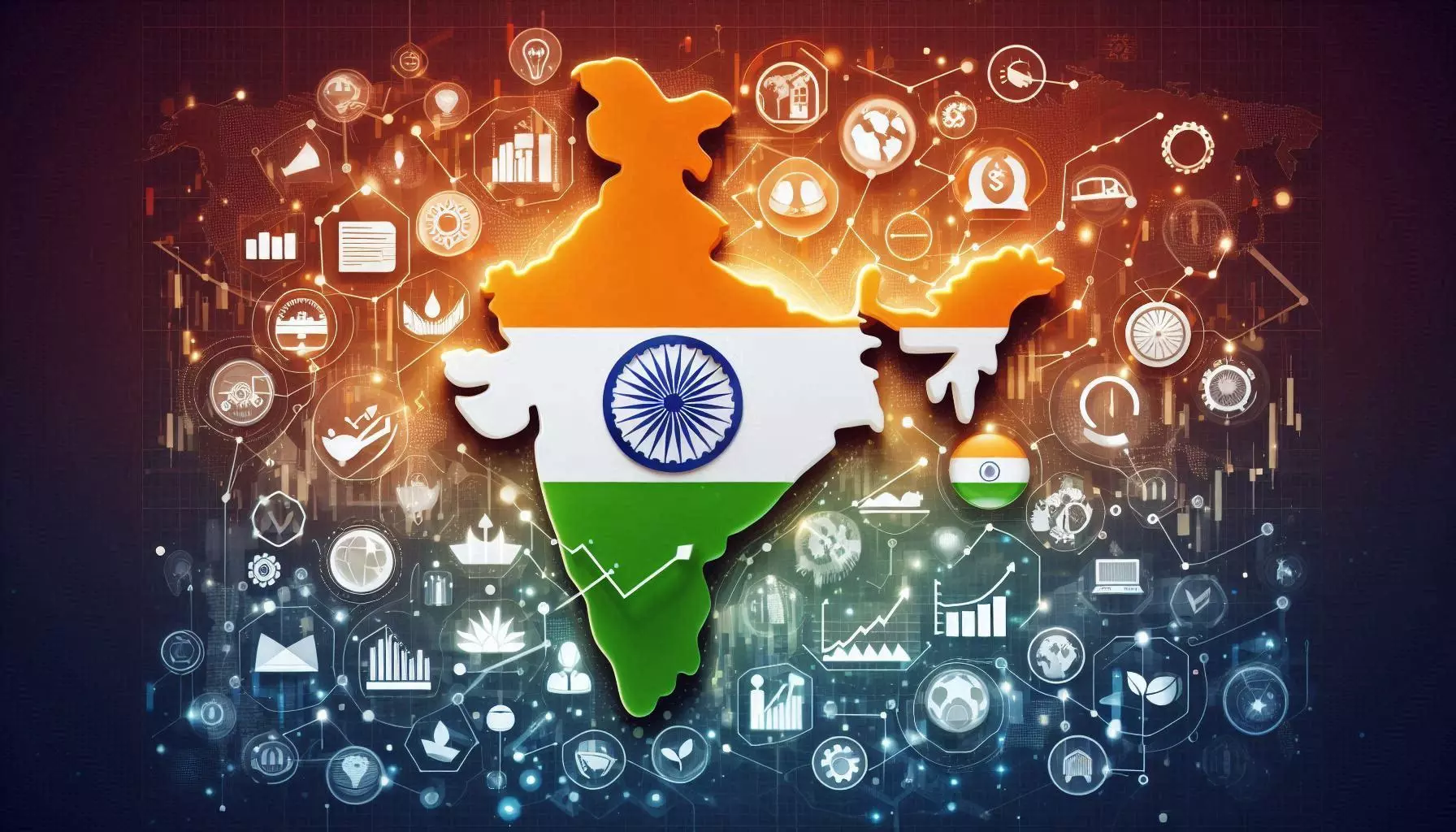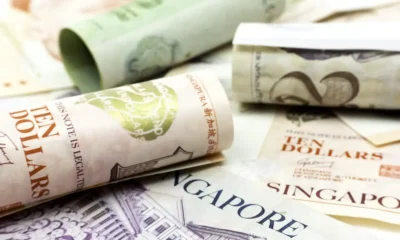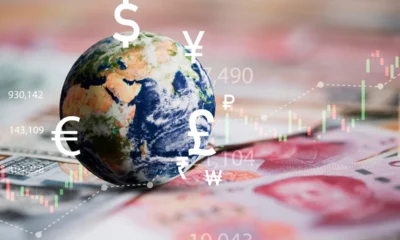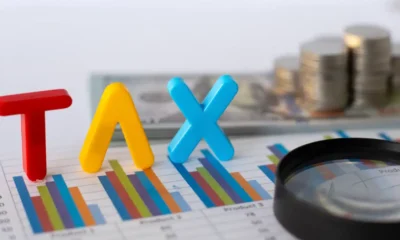Published
11 months agoon

This deceleration is mainly due to challenges such as heavy monsoon rains and weaker corporate margins, which counterbalanced the positive impacts of increased government capital expenditure and a strong kharif sowing season. Gross Value Added (GVA) is also projected to see a slight dip, with growth estimated at 6.6% for Q2 FY2025, compared to 6.8% in Q1 FY2025.
Aditi Nayar, Chief Economist at ICRA, noted, “Q2 FY2025 saw tailwinds in the form of a pick-up in capital expenditure post the Parliamentary Elections and healthy expansion in the sowing of major kharif crops. However, sectors faced headwinds due to heavy rainfall and weaker margins. We expect a modest dip in India’s GVA and GDP growth for the quarter, forecasting 6.6% and 6.5% growth, respectively.”
Government capital expenditure showed a promising recovery in Q2 FY2025, rising by 10.3% year-on-year to ₹2.3 trillion, reversing the sharp 35% contraction seen in Q1 FY2025. This rebound was largely driven by infrastructure-focused ministries, including the Ministry of Road Transport and Highways (41.7% growth) and the Ministry of Railways (8.0% growth). However, state government spending remained muted, with the combined capital outlay and net lending of 22 states increasing by just 2.1% year-on-year in the quarter.
The industrial sector is expected to experience the most significant slowdown, with GVA growth anticipated to moderate to 5.5% in Q2 FY2025, down from 8.3% in the previous quarter. This decline is driven by reduced growth in electricity generation, expected to slow to 2.0% from 10.4%, and mining and quarrying, which is forecasted to grow at just 1.5%, down from 7.2%. Manufacturing growth is also expected to decelerate to 5.5%, compared to 7.0% in Q1, while construction activity is projected to grow at 7.0%, down from 10.5%. These trends are largely attributed to the effects of surplus rainfall, which disrupted mining and electricity demand, reduced retail activity, and led to weakened corporate margins in several sectors.
In contrast, the services and agriculture sectors are expected to show resilience. The services sector is projected to grow by 7.8% in Q2 FY2025, an improvement from the 7.2% recorded in Q1. Agriculture, forestry, and fishing are also forecasted to perform better, with growth estimated at 3.5%, up from 2.0%, supported by favorable kharif sowing conditions and a projected 5.7% increase in kharif foodgrain output.

Private sector investment saw a significant boost in Q2 FY2025, with new project announcements soaring to ₹6.7 trillion, up from ₹2.2 trillion in the previous quarter. Government project announcements also increased, rising to ₹1.5 trillion from ₹1.1 trillion, but the majority of the recovery was driven by the private sector, which saw a sharp rise in announcements to ₹5.2 trillion, compared to ₹1.1 trillion previously. Despite this growth, project completions remained sluggish, improving only slightly to ₹1.0 trillion in Q2 FY2025 from ₹0.7 trillion in Q1, partly due to delays caused by the monsoon.
ICRA anticipates economic activity to pick up momentum in the second half of FY2025, supported by the positive effects of a healthy monsoon, replenished reservoirs, and growing rural demand. There is also considerable potential for growth in government capital expenditure, which would need to rise by 52% year-on-year in the second half to meet the annual budgetary target. However, risks such as slowing personal loan growth, geopolitical uncertainties, and their potential impact on commodity prices and external demand remain pressing concerns.
For the full fiscal year, ICRA projects GDP growth at 7.0% and GVA growth at 6.8%, reflecting an anticipated back-ended recovery.
Going forward, several key challenges are anticipated to impact India’s economic performance:
Slowing Personal Loan Growth: The growth in personal loans, a key driver of consumption, has been slowing down, which could dampen consumer spending and overall economic momentum.
Geopolitical Uncertainties: Ongoing geopolitical tensions and global uncertainties may disrupt trade, impact supply chains, and lead to volatility in commodity prices, creating headwinds for growth.
Commodity Price Fluctuations: Volatility in global commodity prices, particularly for oil and metals, could pose challenges, impacting inflation and external trade balances. Rising energy prices can also strain domestic consumption and business operations.
External Demand Weakness: Sluggish demand from key global markets could affect India’s export growth, especially in sectors like IT and manufacturing, potentially leading to slower-than-expected recovery.
Monsoon and Weather Disruptions: While the monsoon has provided some positive effects, erratic rainfall and weather-related disruptions can impact agriculture, infrastructure projects, and overall economic activity, particularly in rural areas.
Project Execution Delays: Despite strong project announcements, delays in project completions—often due to logistical challenges, weather disruptions, or regulatory hurdles—could limit the immediate economic benefits from new investments.
Inflationary Pressures: While inflation has moderated, there could still be inflationary pressures, particularly in food and fuel prices, which could affect household spending and overall economic stability.
These challenges, alongside the need for continued government and private sector investment, may affect the pace of economic recovery in the second half of FY2025.
India Cuts Tariffs On US Bourbon! But Do Trump’s Retaliatory Tariffs Mean Cheaper American Goods For Indian Consumers?


Singapore Economy On A High. Annual GDP Expands At Fastest Pace Since 2021. Asian Markets Mixed Bag Reaction To Trump’s Reciprocal Tariffs


Global Economic Pulse, UK’s Surprise Growth, US Inflation Jumps While China And Japan Battle It Out—Who’s Leading And Who’s Lagging?


All You Need To Know About The New Income Tax Bill 2025, Debuts With A New Concept Of ‘Tax Year’. A Meaningful Change Or Just A Facelift?


Cooling Period For Mexico And Canada As Trump Pauses Tariffs– Global Stocks Rebound, China Still In Limbo But Will It Bow Down To Trump And What’s India’s Tariff Deal So Far?


Meeting That Has India Spooked, George Soros Son And Muhammad Yunus. The Growing Nexus Bangladesh-Pakistan Spells Trouble For India?
